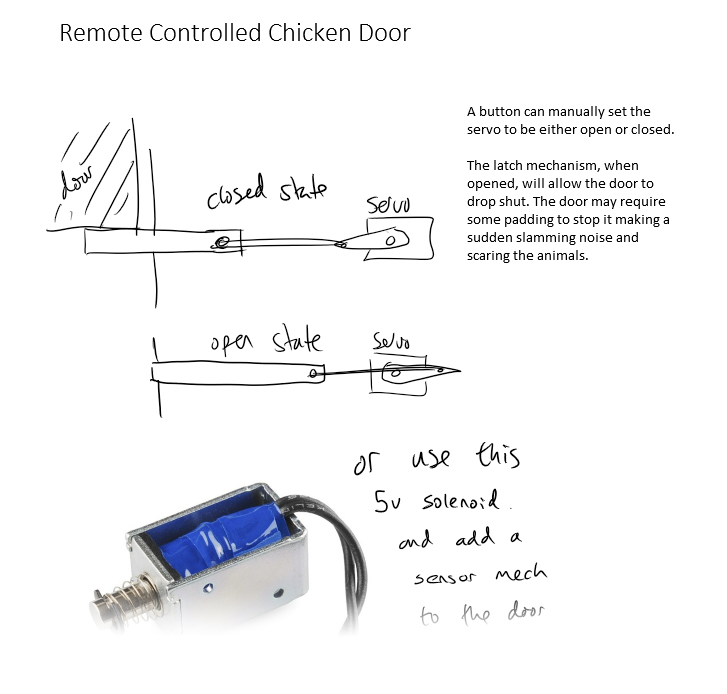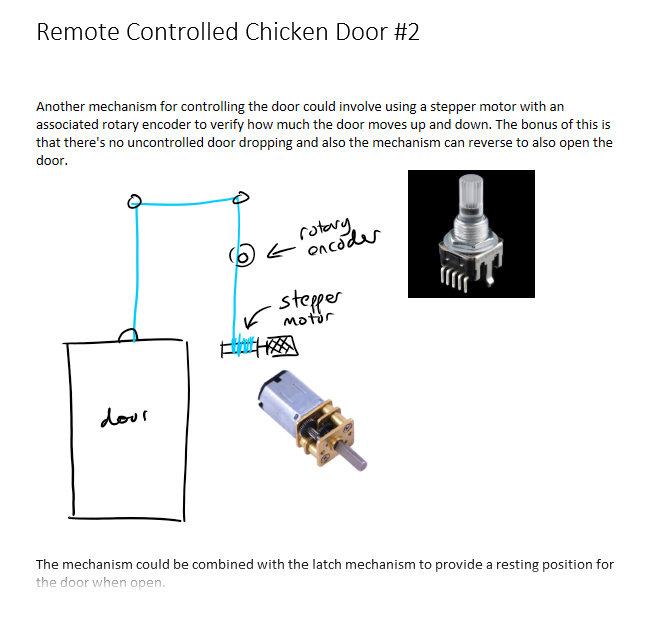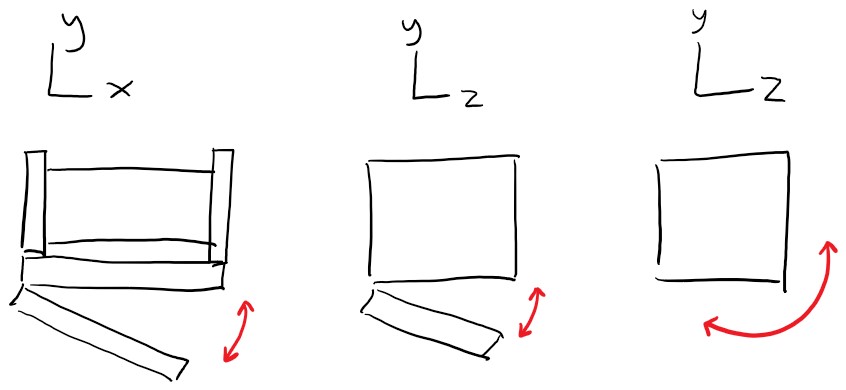The Shape Changing Lamp
The story begins with an automated chicken coop door. The door rises when the sun comes up and lowers when the sun goes down. It only lowers if all the chicken are inside.
The aim of the project to save the hassle of opening and closing a chicken door. It was to learn new skills. The project included some mechanical design, some electrical design and potentially some software (for Internet status monitoring). A friend was a mechanical engineer and wanted to be involved. We jotted down some first ideas; how to control the door, how to identify chickens were inside, how to connect to the internet. We made some starting points so we picked each picked tasks.
Unfortunately, soon after starting we realised we were both too busy to give it our all. We looked at the options and ways forward, and decided to come back to the chicken door. I wanted to focus on mechanical and electrical design on my own so I looked for a different project.
The Lamp
To come up with the automated chicken door idea, I played with Arduino and tried some simple modelling in Solidworks. I wanted more.
The idea of the lamp was that it would be a project that required physical modelling but also electrical components. It would be a lamp that changed shape or colour in response to internet data.
I first tackled the physical model. To achieve the changing shape, I decided two rings on a pole might work. The bottom ring would turn and blades connected between the rings would reposition to a new shape.
IMAGE OF MODEL
The idea needed a special kind of hinge. The hinge would need to move on 3 different axes: rotationally along the ring.
I modelled up the hinge in Solidworks (which took a few weeks of learning to use Solidworks!), and made sure it made sense technically. At that point it hit me. This thing was going be difficult to manufacture.
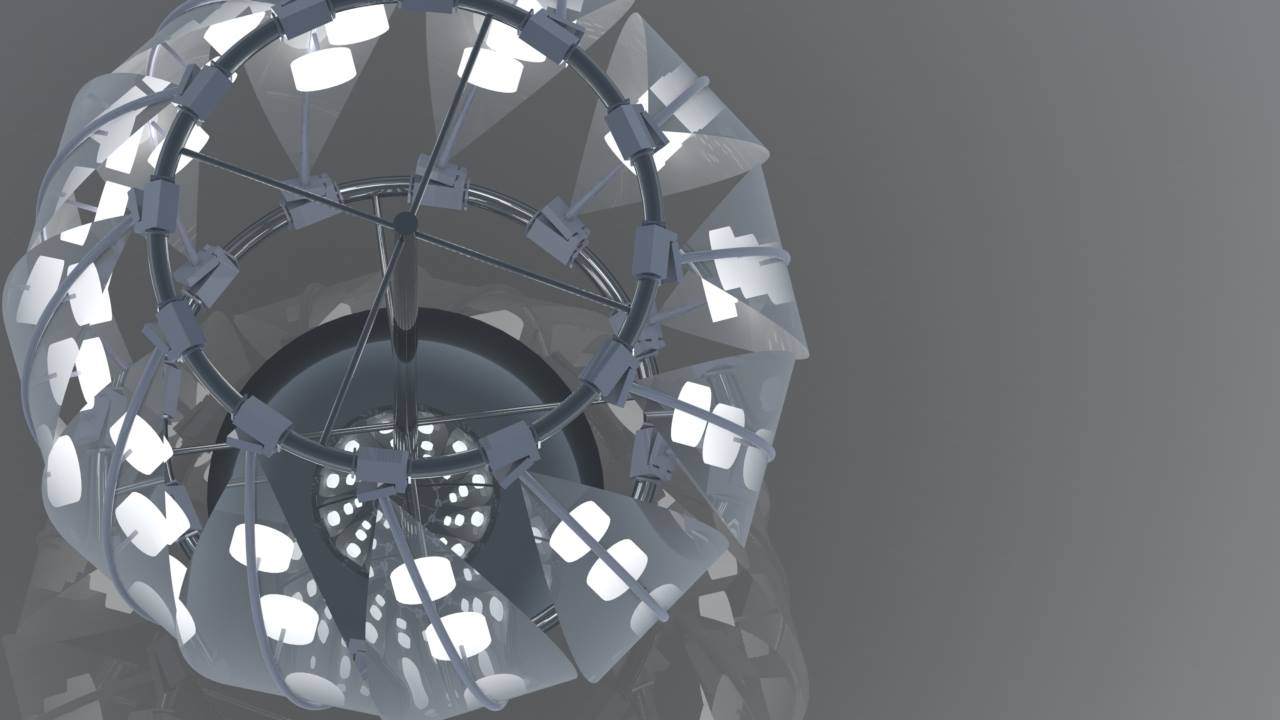
Lamp on and open, view from above
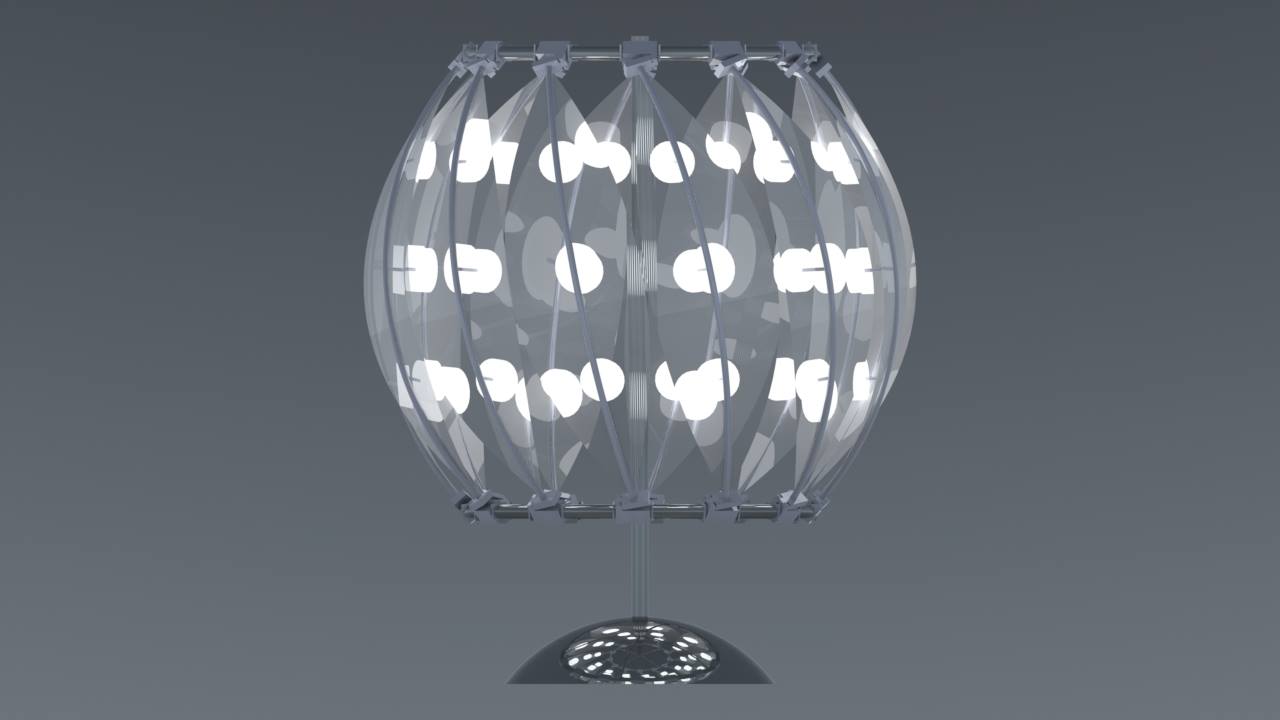
Lamp on and open, side view
I mocked some changes which might have made it easier but by then I’d learnt the basics of Solidworks, and I had learnt enough Arduino on another project. I shelved the project and left it at the design stage. I realised that my main aim on this project was learning more than the result.
No Lamp, But Lessons Learned
I didn’t end up with a lamp to show off, but I did learn something from it. I learned not to get stuck on small details. Sometimes the details matter, but at early stages of design they rarely do. Getting the overall idea and direction right is more important. Also, before you get started have a good idea of what the end result should be, so you know what to focus on first. If it’s to make something, then what will it be? In startup culture it’s known as the minimal viable product: the smallest, quickest version of a product you can test with users/customers. If the aim is to learn, then what do you want to learn. Being clear can save time.
